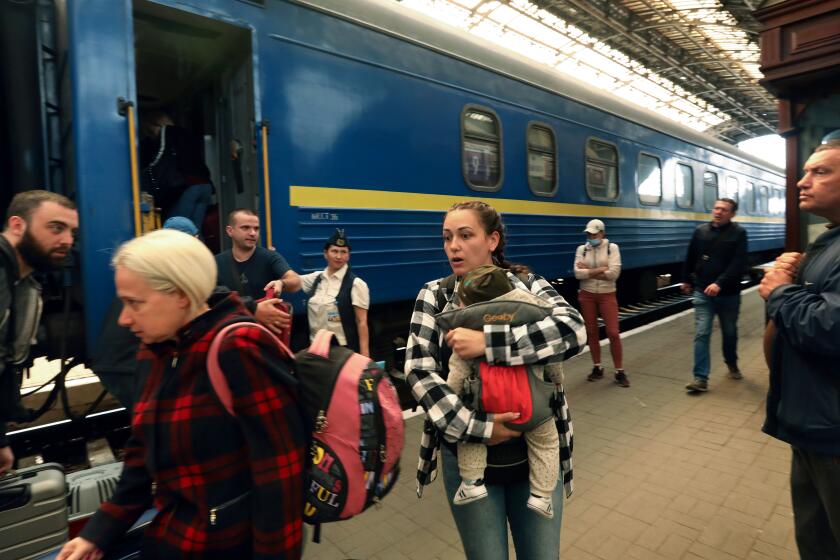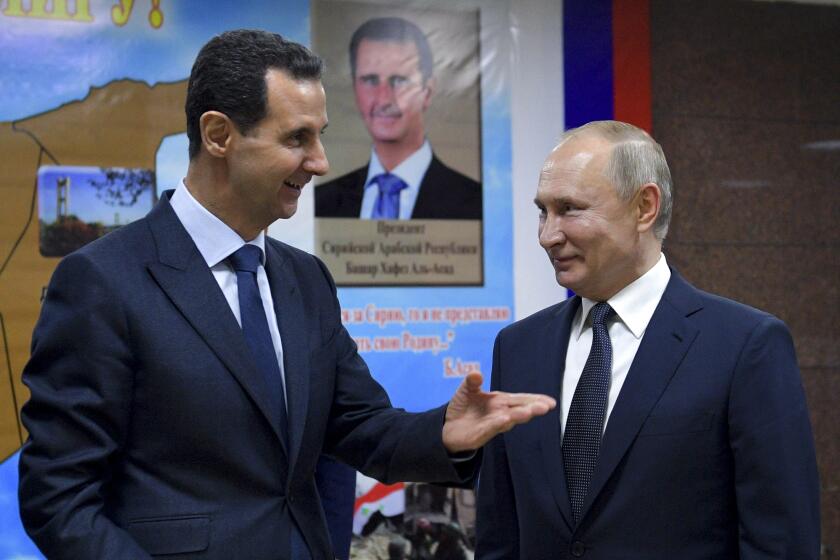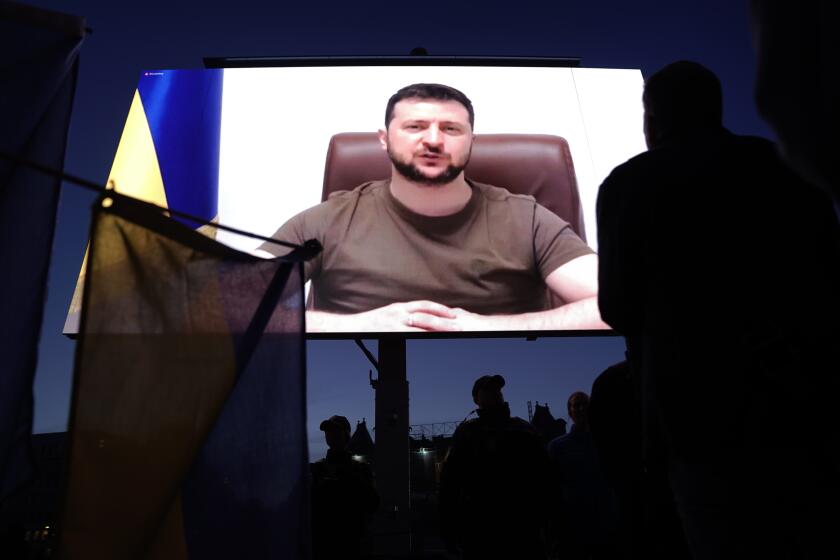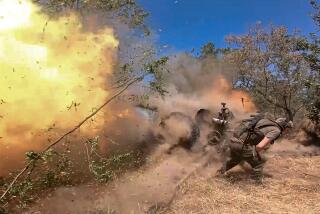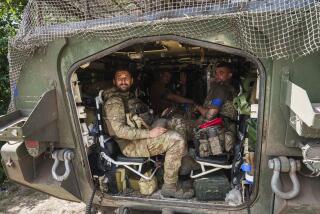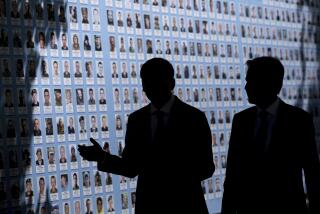Ukraine appears to drive Russians from Kharkiv; Finland, Sweden draw closer to NATO
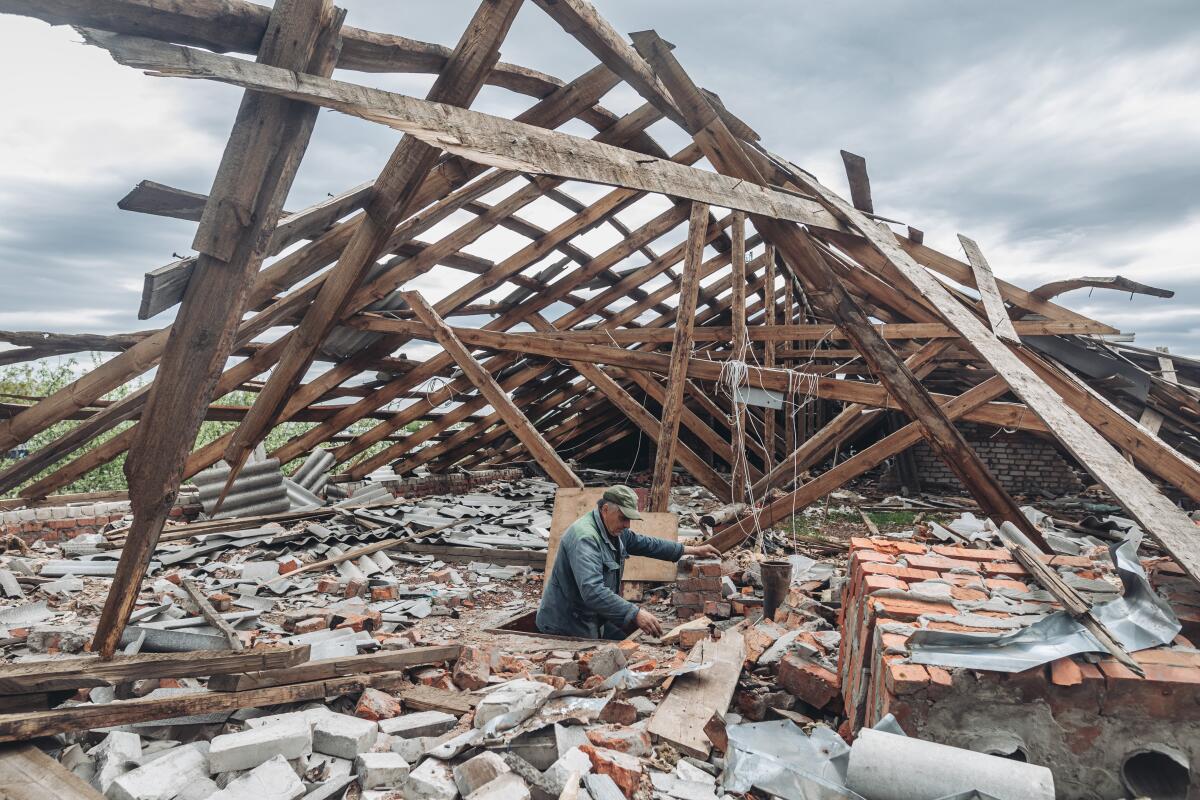
LVIV, Ukraine — Russian troops appeared to be drawing back from the outskirts of Ukraine’s second-largest city Saturday even as fighting continued to rage in other parts of the embattled nation and senior Ukrainian officials predicted a “new, long-term phase” of conflict to last through much of the summer.
Local authorities and military officials said Russian forces were retreating from north of Kharkiv, a city that has faced relentless bombardment since the war began Feb. 24, and were heading toward the Russian border.
An analysis released by the Institute for the Study of War, a U.S.-based think tank, supported those claims, saying Ukraine has “likely won the battle of Kharkiv.”
“Ukrainian forces prevented Russian troops from encircling, let alone seizing Kharkiv, and then expelled them from around the city as they did to Russian forces attempting to seize Kyiv,” the institute said.
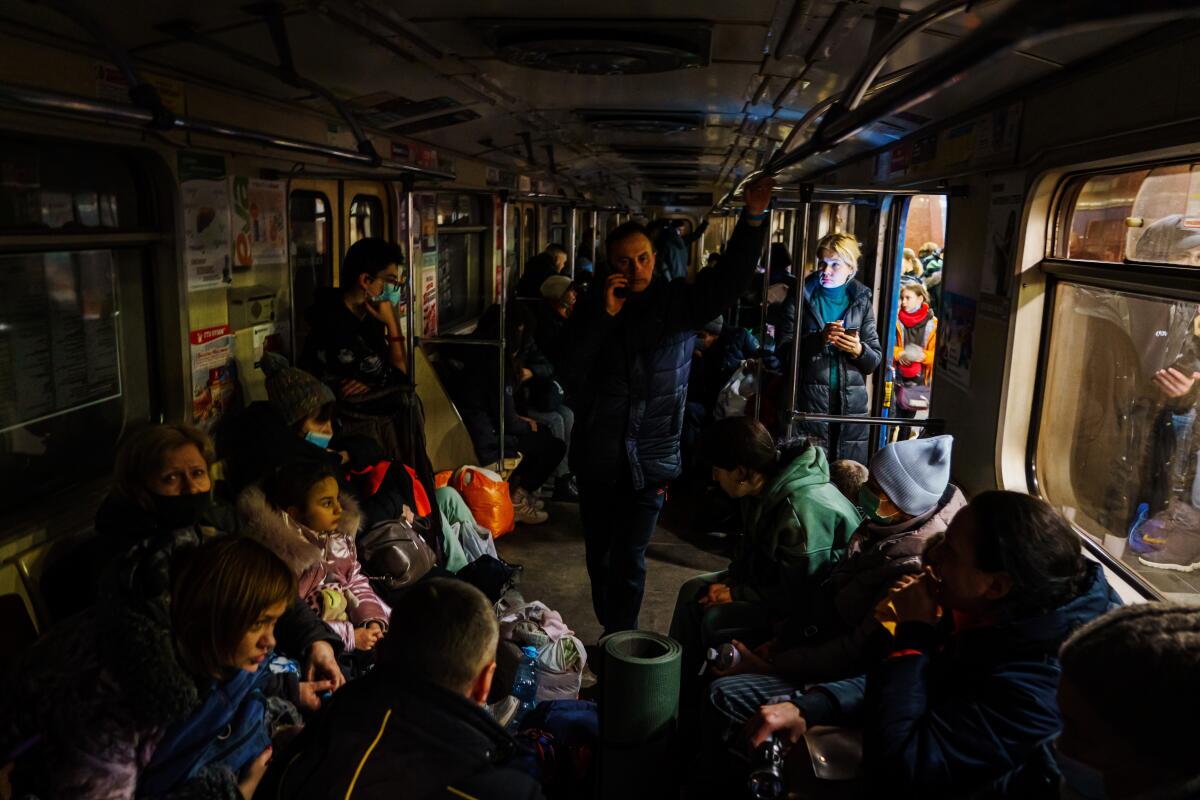
In the city of Izyum, 80 miles southeast of Kharkiv, Ukrainian forces have launched a counteroffensive in an effort to regain more territory, officials said.
The Ukrainian gains came amid rising geopolitical tensions, as Finnish and Swedish officials risked Russia’s wrath by joining a meeting of the North Atlantic Treaty Organization on Saturday.
The foreign ministers of Sweden and Finland were scheduled to meet with NATO representatives in Germany after leaders of both nations expressed strong interest in joining the defense alliance.
Finnish President Sauli Niinisto said that he told Russian President Vladimir Putin on a phone call Saturday that the invasion of Ukraine has fundamentally changed “the security environment of Finland,” which shares a more than 800-mile border with Russia, and said his country would seek NATO membership “in the next few days.”
The news has been welcomed by the U.S. and several other NATO member states, and has angered Russia, which views expansion of the alliance’s territory as a threat to its security.
rity.
Relieved but anxious and fearful, passengers on a Ukrainian train describe the horrors of the Russian invasion and recount what they left behind.
The Kremlin said Saturday that Putin had warned Niinisto that the relationship between the neighbors could be “negatively affected” if Finland applies to join NATO.
And in a sign of the economic power that Russia wields over much of Europe, on Saturday the Finnish power company Fingrid said that Russia cut off electricity supplies to the nation. A representative for the company said that Finland “can cope” and that the power grid would not be interrupted.
As Congress considers additional aid for Ukraine, Senate Minority Leader Mitch McConnell (R-Ky.) made an unannounced visit to Kyiv along with three other Republican senators, the latest in a string of high-profile U.S. officials, including House Speaker Nancy Pelosi (D-San Francisco), to have toured the Ukrainian capital in recent weeks.
The meeting was “a strong signal of bipartisan support for Ukraine from the United States Congress and the American people,” President Volodymyr Zelensky said on Instagram. “Thank you for your leadership in helping us in our struggle not only for our country, but also for democratic values and freedoms.”
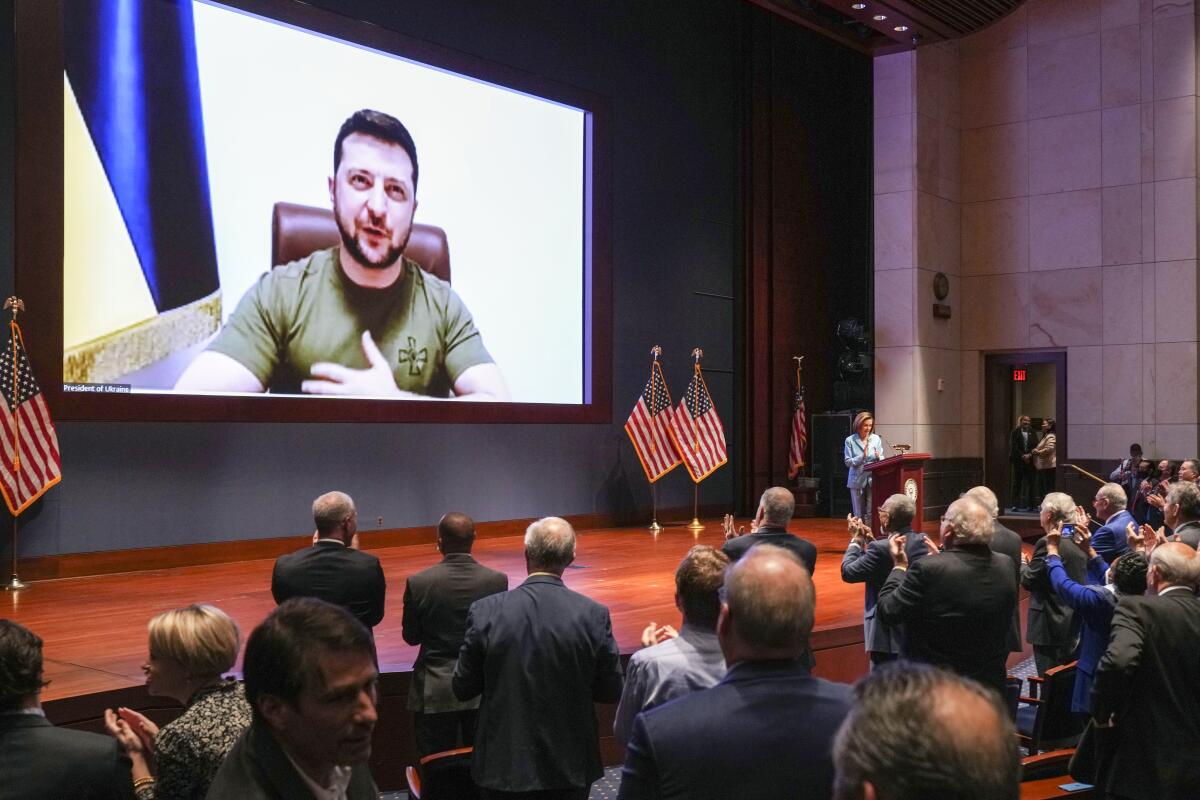
Immediate action on a bipartisan bill to give Ukraine an additional $40 billion in humanitarian and military aid has been blocked by Sen. Rand Paul (R-Ky.), who said he wanted to have an inspector general scrutinize the spending.
At the same time fighting continued across Ukraine, where the first war crimes trial of a Russian soldier opened in Kyiv on Friday and Russia blamed Ukrainian shelling for the death of a civilian in a Russian village near the Ukrainian border.
Western analysts and intelligence groups said Ukraine’s mounting response to Russian assaults was showing signs of success not only in Kharkiv in the northeast but also in the Donbas, the eastern Ukrainian industrial heartland where Moscow has fomented unrest for years through its support of pro-Russia separatists.
In its daily intelligence update, the British Ministry of Defense said that Moscow’s attempt to hold a pro-Russia referendum in Kherson, a southeastern district that was the first to fall in the war, marked a failure.
Russia played a key role in Syria’s civil war. Which tactics are they reusing in Ukraine?
“A central part of Russia’s original invasion plan was highly likely to use rigged referendums to place the majority of Ukraine’s regions under long-term pro-Russian authority,” the ministry said. “The fact that Russia has only succeeded in imposing a pro-Russian local leadership in Kherson highlights the failure of Russia’s invasion to make progress towards its political objectives in Ukraine.”
Hot spots of fighting continued to include the southern city of Mariupol, Zelensky said in an overnight address. Hundreds of Ukrainian civilians have been evacuated from the bunkers and tunnels of the sprawling Azovstal steel plant that is Ukraine’s last holdout in the shattered southern port city on the Sea of Azov.
“We do not stop trying to save all our people from Mariupol and Azovstal. Currently, very difficult negotiations are underway on the next stage of the evacuation mission,” Zelensky said. The president said “a large” number of individuals remained trapped in the complex, though he did not give a specific count.
He said Ukraine’s advances in the northeast should give his nation hope.
“The gradual liberation of the Kharkiv region proves that we will not leave anyone to the enemy,” Zelensky said.
Veterans of the Lincoln Project are using lessons learned in 2020 to help Ukraine combat Russian lies and misinformation.
In an interview on Sky News on Saturday, Ukrainian military intelligence leader Kyrylo Budanov said he expected battles across the nation to last through the summer and predicted, perhaps prematurely, a Ukrainian win.
“The breaking point will be in the second part of August. Most of the active combat actions will have finished by the end of this year,” he said.
Ukrainian Defense Minister Oleksii Reznikov offered a more cautious assessment in a post on Facebook.
“We are entering a new, long-term phase of the war,” he said. While he welcomed a growing supply of Western arms flowing into his nation, he said he expected “extremely difficult weeks” ahead, adding, “How many there will be? No one can say for sure.”
The United Nations last week estimated that more than 14 million people have been displaced by the war in Ukraine. The number represents about a third of the nation’s population.
The U.N. also reported more than 3,500 civilian deaths, though it said the real number is probably much higher.
McDonnell reported from Lviv, Kaleem from London and Linthicum from Mexico City.
More to Read
Sign up for Essential California
The most important California stories and recommendations in your inbox every morning.
You may occasionally receive promotional content from the Los Angeles Times.
